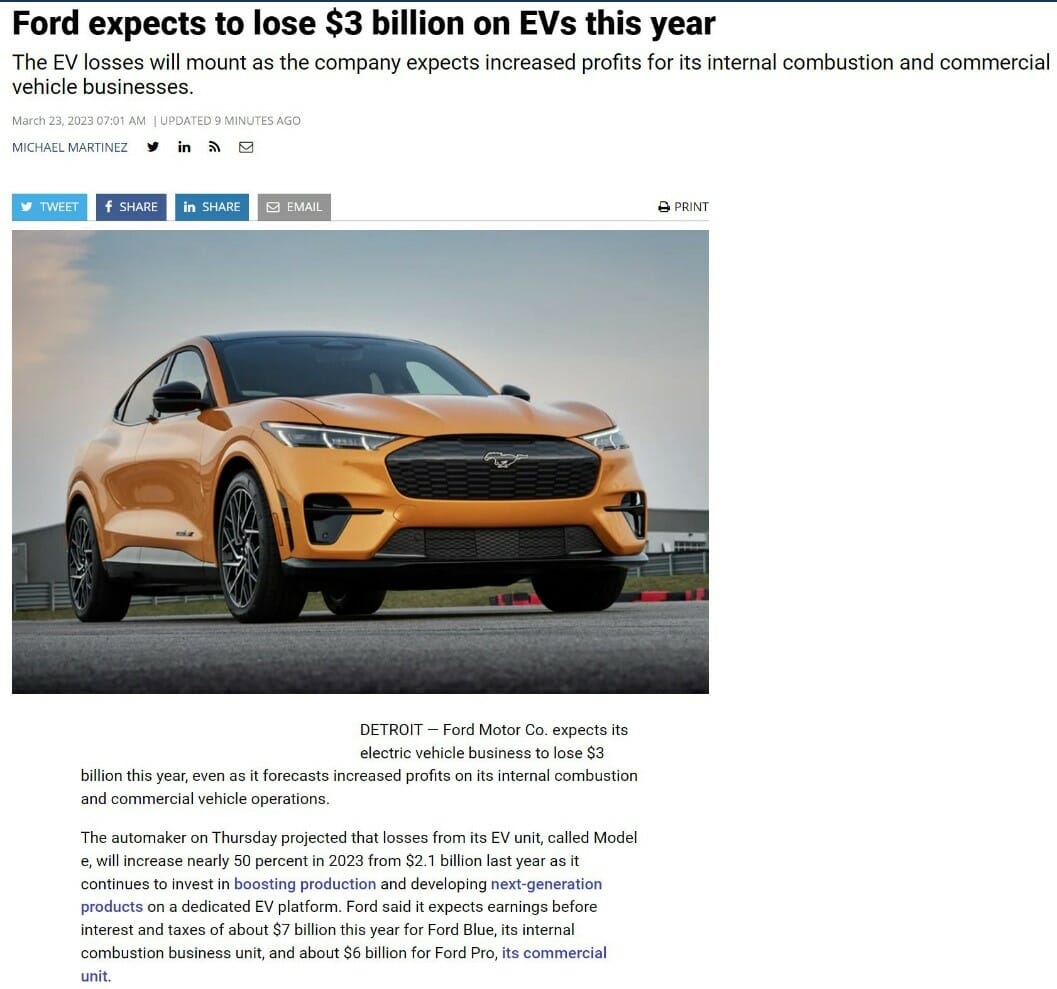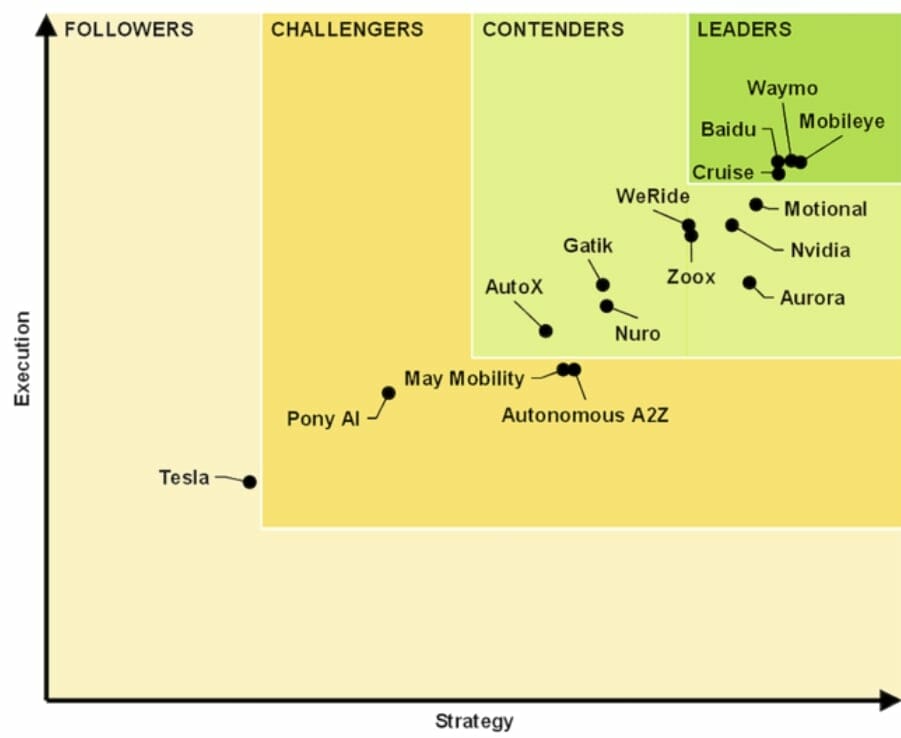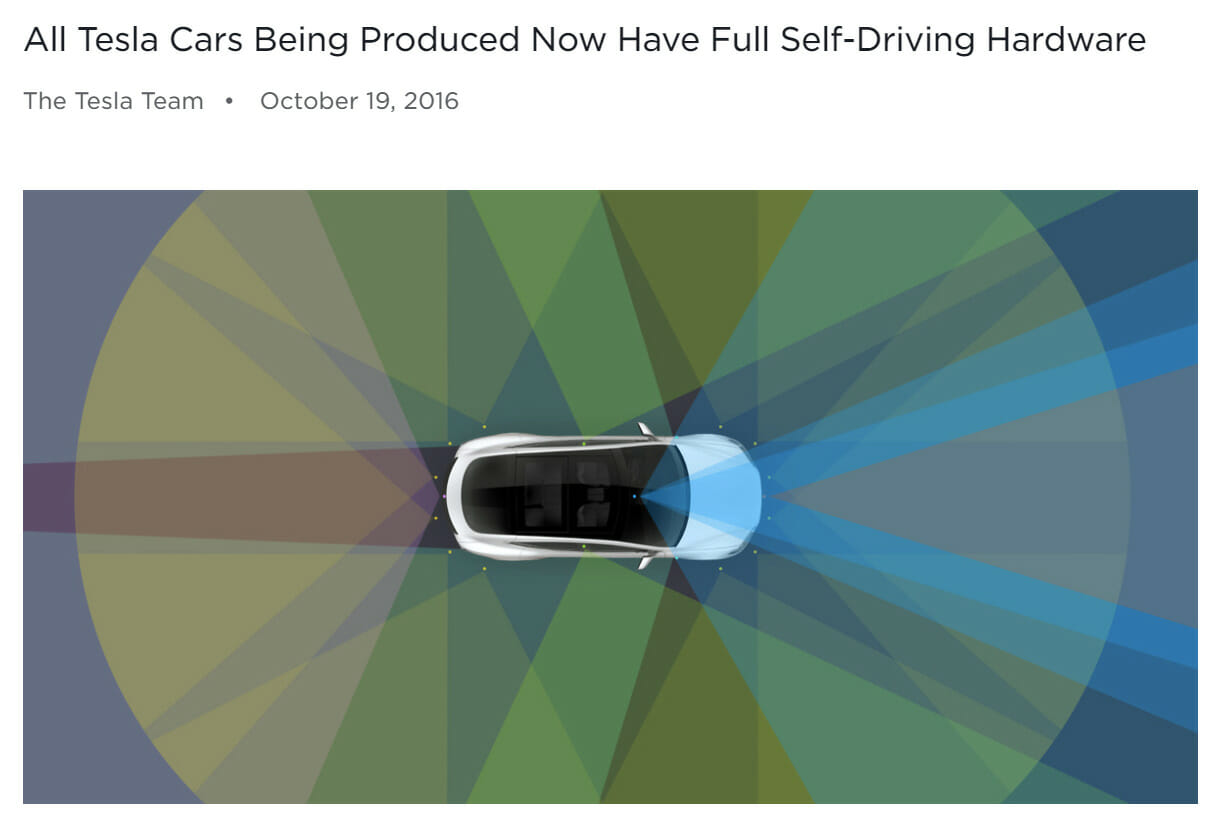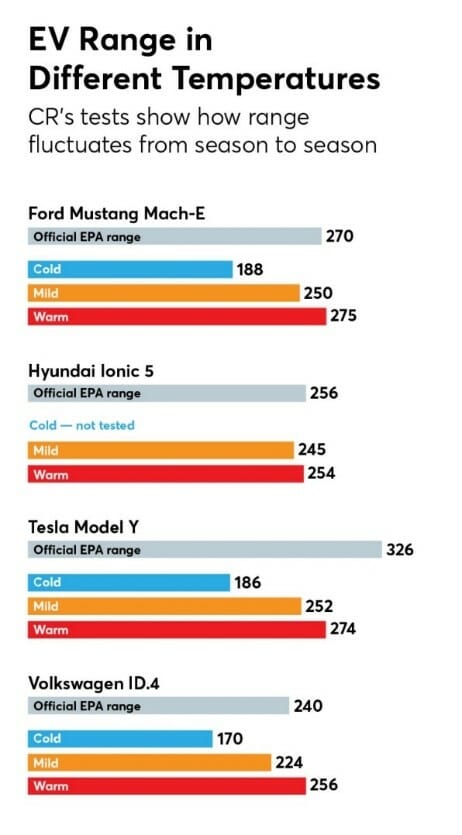Stanphyl Capital’s commentary for the month ended May 31, 2023, discussing their short position in Tesla Inc (NASDAQ:TSLA).
In late-May leaked documents revealed that Tesla has conducted an egregious, multi-year cover-up of deadly safety problems caused by its (so-called) “Autopilot/Full Self-Driving” system, as well as sudden unintended acceleration.
I believe this will finally force regulators to demand a massive, multi-billion-dollar recall of both systems and, as importantly, destroy whatever goodwill remains towards this sleazily run company (except, of course, from the diminishing number of hardcore cult members who will deservedly go down with the ship).
More Margin-Slashing Price Cuts
Meanwhile, Tesla kicked off this quarter with even more worldwide margin-slashing price cuts on top of the massive, margin-destroying cuts it made in Q1. (And those cuts were on top of large cuts made in Q4 2022!)
Yet despite all those cuts, Tesla managed to deliver only around 4% more cars in Q1 than it did in the previous quarter (Q4 2022), and due to the aforementioned price slashing its earnings were atrocious—despite booking a massive amount of emission credit revenue, they were down 23% vs. Q1 2022 and 32% sequentially.
In fact, without a .15/share foreign currency loss improvement vs. Q4 2022, sequential earnings would have been down 46% (!) and revenue was also down sequentially. And as I believe those earnings are artificially high because Tesla deceptively under-amortizes its factories, we should also look at free cash flow, which dropped to just $400 million. In other words, Tesla is no longer a “growth” company unless you define “growth” as declining earnings, declining revenue and declining free cash flow!
Most disturbingly for Tesla bulls, despite the massive price cuts vs. Q4 2022, at 1.8 million units the company is only guiding to 11% more delivery volume than Q4’s 405,000 annualized run-rate of 1.62 million. It’s also only guiding to 2% more production than Q4’s annualized rate of 1.76 million, so where will the “volume savings” to support price cuts come from? And what will Tesla do for its next “growth trick”? Sell cars at a loss? Sell a tiny subcompact beginning in 2025 with an even smaller margin?
Meanwhile the incumbent auto companies can better afford (earnings-wise) to slash prices on their EVs, as those prices can be cross-subsidized by their 95% of volume that comes from highly-profitable ICE vehicles, while Tesla now has nothing that’s “highly profitable.” Here from Automotive News is an excellent example of how OEMs will maintain high overall profitability despite losing money on EVs as they “scale” EV production to Tesla’s cost level:

So while Tesla may “win” an EV price war against other pureplay EV makers, it will lose that war against the incumbent OEMs. Goodbye “story-stock tech company” and hello “low-margin, cyclical car company” in an industry with single-digit PE ratios, and for Tesla that could mean as little as 8x $2.50/share in 2023 GAAP earnings = a stock price of $20/share vs. May’s close of $203.93. (And please don’t lecture me about Tesla’s “energy business,” which in Q1 accounted for just 6.5% of revenue and had just an 11% gross margin and likely nets in the low single digits as it’s an extremely competitive, low-margin industry.)
No Product Edge
Meanwhile, Tesla has objectively lost its “product edge,” with many competing cars now offering comparable or better real-world range, better interiors, similar or faster charging speeds and much better quality. (Tesla ranks near the bottom of Consumer Reports’ reliability survey.) And Tesla is opening its U.S. charging network to everyone (which it already does in much of Europe), eliminating the last reason to buy its now trailing-edge EVs.
In fact, Tesla is likely now the second, third or fourth choice for many EV buyers, and only maintains its volume lead though a short-lived edge in production capacity that will disappear over the next 12 to 36 months as competitors rapidly increase the ability to produce their superior EVs.
Tesla’s poorly-built Model Y faces competition from the much better made (and often just better) electric Hyundai Ioniq 5, Kia EV6, Ford Mustang Mach E, Cadillac Lyriq, Nissan Ariya, Audi Q4 e-tron, BMW iX3, Mercedes EQB, Chevrolet Blazer EV & Equinox EV, Volvo XC-40 Recharge and Polestar 3. And Tesla’s Model 3 now has terrific direct “sedan competition” from Volvo’s beautiful Polestar 2, BMW’s i4, Hyundai’s Ioniq 6 and Volkswagen’s ID.7, as well as multiple local competitors in China.
And in the high-end electric car segment worldwide the Porsche Taycan outsells the Model S, while the spectacular new BMW i7, Mercedes EQS and EQE, Audi e-Tron GT and Lucid Air make the Tesla look like a fast Yugo, while the extremely well reviewed new BMW iX, Mercedes EQS SUV and Audi Q8 eTron (as well as multiple new Chinese models) do the same to the Model X.
And oh, the joke of a “pickup truck” Tesla first previewed in 2019 (and still hasn’t shown in production-ready form) won’t be much of “growth engine” either, as by the time it’s in meaningful mass-production in 2024 it will enter a dogfight of a market vs. Ford’s hot-selling all-electric F-150 Lightning and GM’s fantastic 2023 electric Silverado (which already has nearly 200,000 reservations), while Rivian’s pick-up has gotten excellent reviews and Ram will also be out with a great electric truck in 2024.
Tesla is Blackberry
Indeed, for years I’ve said “Tesla is Blackberry” – the maker of a first-generation version of a product that—once the market was proven – would be supplanted into niche obscurity by newer, better versions, and now it’s finally happening.
I believe Musk knows this (hence his recent “Twitter buying distraction”), with VW Group, Hyundai/Kia, Ford, GM, Stellantis, BMW, Mercedes, BYD & other Chinese competitors and, in a few years, Toyota & Honda, stealing Tesla’s share and pounding its stock price into the low double-digits, where it will be valued as “just another car company.”
Meanwhile, the NHTSA has initiated the first of what will likely be multiple recalls of Tesla’s fraudulently named “Full Self Driving,” and in January it was revealed that Elon Musk personally directed its fake, fraudulent promotional video (something extremely similar to what Theranos did with its blood machines and Nikola with its truck), and that the DOJ is investigating him for it and so is the SEC.
The refund liability potential for Tesla for this is in the billions of dollars, and possibly even the tens of billions if a class action lawsuit proves that the cars involved were purchased solely due to the (fallacious) promise of “full self-driving.”
And, of course, there will be a massive “valuation reappraisal” for Tesla’s stock as the world wakes up to the fact that its so-called “autonomy technology” is deadly, trailing-edge garbage that Consumer Reports now ranks just seventh vs. competitors’ systems (behind Ford, GM, Mercedes, BMW, Toyota and Volkswagen) and Guidehouse Insights now rates dead last:

Meanwhile, the NHTSA continues to report a slew of Autopilot-related deaths (which, as noted earlier, Tesla has been doing its best to hid), yet Tesla has sold this trashy software for over six years now:

…and still promotes it on its website via the aforementioned completely fraudulent video! (For all Tesla-related deaths cited in the media—which is likely only a small fraction of those that have occurred—please see TeslaDeaths.com.)
Want to see another Elon Musk/Tesla deception summarized in a simple bar graph? In this recent Consumer Reports test, note which of these cars never comes close—in any environmental conditions—to meeting its claimed EPA range:

Another favorite Tesla hype story has been built around so-called “proprietary battery technology.” In fact though, Tesla has nothing proprietary there—it doesn’t make them, it buys them from Panasonic, CATL and LG, and it’s the biggest liar in the industry regarding the real-world range of its cars. And if new-format 4680 cells enter the market, even if Tesla makes some of its own, other manufacturers will gladly sell them to anyone, and BMW has already announced it will buy them from CATL and EVE.
So Here Is Tesla’s Competition In Cars…
(note: these links are regularly updated)
- Porsche Taycan
- Porsche Macan Electric Coming in 2024
- Volkswagen ID.3
- Volkswagen ID.4 Electric SUV
- Volkswagen unveils ID.6 SUV EV in China
- Volkswagen ID.Buzz Electric Van
- Volkswagen ID.7
- VW’s ID.2all compact EV will cost under €25,000 when it arrives in 2025
- VW’s Cupra Born
- Volkswagen Group Will Spend $200 Billion To Boost Its EV Business
- Audi Q8 e-tron electric SUV
- Audi e-tron GT
- Audi Q4 e-tron
- Audi Q6 e-tron electric SUV
- Audi A6 E-tron due in early 2024 with saloon, estate and hot RS6
- Hyundai Ioniq 5
- Hyundai Ioniq 6
- Hyundai Kona Electric
- Genesis reveals their first EV on the E-GMP platform, the electric GV60 crossover
- Genesis Electrified GV70 Revealed With 483 Horsepower And AWD
- Kia Niro Electric: 239-mile range & $39,000 before subsidies
- Kia EV6: Charging towards the future
- Kia EV9 large electric SUV
- Kia EV4 on course to grow electric SUV range
- Jaguar’s All-Electric i-Pace
- Jaguar to become all-electric brand; Land Rover to Get 6 electric models
- Daimler will invest more than $47B in EVs and be all-electric ready by 2030
- Mercedes EQS
- Mercedes EQS SUV
- Mercedes EQE
- Mercedes EQE SUV
- Mercedes EQC electric SUV available in Europe & China
- Mercedes EQV Electric Passenger Van
- Mercedes EQB
- Mercedes EQA SUV
- Ford Mustang Mach-E
- Ford F-150 Lightning
- Ford set to launch ‘mini Mustang Mach-E’ electric SUV in 2023
- Ford to launch 7 EVs in Europe in big electric push
- Ford unveils Lincoln Star electric SUV concept as it readies to add four new EVs by 2026
- Chevrolet Blazer EV
- Chevrolet Equinox EV
- Chevrolet Bolt
- Chevrolet Bolt EUV electric crossover
- Cadillac All-Electric Lyriq
- Cadillac to start making 3 more EVs in 2024
- GMC Electric Hummer Pick-Up and SUV
- GM electric Silverado pickup truck
- GMC Sierra EV Denali
- GM Launches BrightDrop to Electrify the Delivery of Goods and Services
- GM & Honda Will Codevelop Affordable EVs Targeting Most Popular Vehicle Segments
- Two Jeep EVs to make U.S. debuts in 2024
- BMW iX2
- BMW iX3
- BMW iX
- BMW i4 sedan
- BMW i7
- BMW iX1
- Nissan Ariya: All-Electric Crossover SUV
- Nissan LEAF e+
- Nissan aims to electrify 98% of Europe sales, helped by Renault
- Polestar 2 sedan
- Polestar 3 electric SUV
- Volvo XC40 Recharge electric SUV
- Volvo C40 Recharge electric crossover
- Volvo EX90 electric SUV
- Renault upgrades Zoe electric car as competition intensifies
- Renault Dacia Spring Electric SUV
- Renault to boost low-volume Alpine brand with 3 EVs
- Renault’s electric Megane will debut new digital cockpit
- Stellantis promises ‘heart-of-the-market SUV’ from new, 8-vehicle EV platform
- Ram 1500 Revolution Battery-electric Vehicle Unveiled at CES 2023
- Chrysler to go all-EV by 2028
- Honda, Sony to start premium EV deliveries in 2026
- Honda pours $40 billion into electrification, targets 2 million EV production by 2030
- Alfa Romeo’s First Electric Car Will Arrive in 2024
- Peugeot e-208
- PEUGEOT E-2008: THE ELECTRIC AND VERSATILE SUV
- Peugeot 308 will get full-electric version
- Peugeot’s full-electric 3008 and 5008 SUVs will have up to 700 km range
- Subaru shows off its first electric vehicle, the Solterra SUV
- Citroen compact EV challenges VW ID3 on price
- Rivian electric pickup trucks & SUVs
- Maserati GranTurismo Debuts As Brand’s First EV With Three Motors, AWD
- Mini Cooper SE Electric
- Toyota bZ4X
- Toyota and Lexus Will Launch 10 New EVs By 2026
- Opel Corsa-e
- Opel expands EV lineup with battery-electric Astra
- Vauxhall Mokka electric
- Skoda Enyaq iV electric SUV
- Skoda Enyaq electric coupe
- Skoda plans small EV, cheaper variants to take on French, Korean rivals
- BYD presents three BEVs for European market
- Nio expands into Europe and beyond
- Lucid Motors: Electric Luxury Cars
- Fisker Ocean
- Rolls-Royce Electric Spectre, Available 2023
- Bentley will start output of first full EV in 2025
- Aston Martin will build electric vehicles in UK from 2025
- Two new electric cars from Mahindra in India; Global Tesla rival e-car soon
- Sono Sion
- Foxconn aims for 10% of electric car platform market by 2025
And In China…
- BYD is #1 in Chinese EVs, selling FAR more than Tesla
- Volkswagen to boost Chinese EV capacity to 1m by 2023
- Audi-FAW’s $3.3 billion electric vehicle venture
- Nio
- Xpeng Motors
- Hozon/Neta
- Li Auto
- GAC Aion
- Leap Motors
- GM plans to launch over 15 EV models in China by 2025
- Ford Mustang Mach-E Rolls Off Assembly Line in China
- Cheaper than Tesla: Honda takes aim at China’s middle class
- BMW i3 Debuts As All-Electric 3 Series Only For China
- Hongqi
- Geely
- Zeekr Premium EVs by Geely
- Baidu and Geely put nearly $400 million more into their electric car venture
- China-made Mercedes-Benz EQE hits market
- BAIC
- Hyundai, BAIC Motor to inject $942 mn in China JV for EVs
- Toyota partners with BYD to build affordable $30,000 electric car
- Lexus RZ 450e Steers For China
- Dongfeng
- SAIC
- Renault launches sales of first EV in China
- Nissan expects 40% of sales in China to be electrified by 2026
- Changan forms subsidiary Avatar Technology to develop smart EVs with Huawei, CATL
- WM Motors/Weimar
- Chery
- Seres
- Enovate
- Singulato
- JAC Motors
- Iconiq Motors
- Aiways
- Skyworth Auto
- Youxia
- Human Horizons
- Xiaomi announces plans for four electric vehicle models
Here’s Tesla’s Competition In Autonomous Driving; The Independents All Have Deals With Major OEMs…
- Waymo ranked top & Tesla last in Guidehouse leaderboard on automated driving systems
- Tesla has a self-driving strategy other companies abandoned years ago
- Waymo operates robotaxis NOW
- GM’s Cruise operates robotaxis NOW
- Mobileye operates driverless test fleets in Europe and the U.S.
- Cadillac Super Cruise™ Sets the Standard for Hands-Free Highway Driving
- Ford’s hands-free “Blue Cruise”
- Mercedes Launches SAE Level 3 Drive Pilot System
- Honda Legend Sedan with Level 3 Autonomy Now Available in Japan
- Motional (Hyundai) & Uber Announce Autonomous Ride-hail and Delivery Services
- Stellantis Completes Acquisition of aiMotive to Accelerate Autonomous Driving Journey
- Amazon’s Zoox will test its autonomous vehicles on Seattle’s rainy streets
- Baidu to further deploy 200 driverless vehicles in China in 2023
- Baidu Apollo City Driving Max
- Alibaba-backed AutoX unveils first driverless RoboTaxi production line in China
- Pony.ai approved for public driverless robotaxi service in Beijing
- SAIC-backed Xiangdao Chuxing kicks off Robotaxi pilot operation in Shenzhen
- WeRide greenlighted for autonomous road test with empty driver’s seat in Beijing
- GAC-backed Ontime greenlighted for pilot operation of Robotaxi service in Guangzhou
Here’s Where Tesla’s Competition Will Get Its Battery Cells…
- Panasonic (making deals with multiple automakers)
- LG
- Samsung
- SK Innovation
- Toshiba
- CATL
- BYD
- Northvolt
- Volkswagen to Build Six Electric-Vehicle Battery Factories in Europe
- GM’s Ultium
- GM to develop lithium-metal batteries with SolidEnergy Systems
- SK On and Ford form BlueOval SK, an EV battery joint venture
- Hyundai teams with SK to make batteries for U.S.-built EVs
- Hyundai Motor developing solid-state EV batteries
- BMW & Ford Invest in Solid Power to Secure All Solid-State Batteries for Future Electric Vehicles
- Stellantis affirms commitment to build battery factory in Italy with Mercedes, TotalEnergies
- Stellantis and Samsung SDI to Invest Over $2.5B in Battery Production Plant in United States
- Stellantis and LG to Invest Over $5 Billion CAD in Joint Venture for Li-Ion Battery Plant in Canada
- Stellantis and Factorial Energy to Jointly Develop Solid-State Batteries for Electric Vehicles
- Mercedes-Benz to build 8 battery factories in push to become electric-only automaker
- Mercedes-Benz and Sila achieve breakthrough with high silicon automotive battery
- Toyota pledges $2.1bn more for U.S. EV battery plant
- Toyota Outlines Solid-State Battery Tech, $13.6 Billion Investment
- Honda and LG Energy Formally Establish Battery Production Joint Venture
- Honda, GS Yuasa agree to collaborate in lithium-ion batteries
- Daimler joins Stellantis as partner in European battery cell venture ACC
- Renault signs EV battery deals with Envision, Verkor for French plants
- Nissan to build $1.4bn EV battery plant in UK with Chinese partner
- Nissan Announces Proprietary Solid-State Batteries
- Foxconn breaks ground on first EV battery plant
- Envision-AESC
- ONE
- EVE
- Freyr
- Verkor
- Farasis
- Microvast
- Akasol
- Cenat
- Wanxiang
- Eve Energy
- Svolt
- Romeo Power
- ProLogium
- Morrow
- Amprius
- CALB
Here’s Tesla’s Competition In Charging Networks…
- Tesla will open charging network to other EVs
- Infrastructure Bill: $7.5 billion Towards Nationwide Network of 500,000 EV Chargers
- Electrify America
- EVgo
- Chargepoint
- Walmart
- Enel
- EU reaches deal to roll out charging points across bloc
- Ionity Europe
- Shell
- 51 U.S. electric companies commit to build nationwide EV fast charging network by end of 2023
- GM, EVgo, and Pilot will install 2,000 fast chargers at travel centers
- GM targeting 40,000 chargers across the U.S. and Canada in partnership with its dealerships
- Mercedes will build its own EV charging network
- Ford To Have One Of The Largest DC Fast-Charging Networks In US
Volkswagen powers up the grid to take on Tesla - Volkswagen-backed CAMS eyes deployment of 17,000 charging points in China by 2025
- Circle K begins North American EV fast charger rollout, plans 200-site network by 2024
- Rivian will open its growing EV charging network to the public
- Porsche to build out its own network of EV charging stations
- Petro-Canada Coast-to-Coast Canadian Charging Network
- Volta
- E.On
- BP
- Volkswagen and BP partner to deploy up to 8,000 EV chargers across EU/UK
- Smatric
- Allego
- Podpoint
- Instavolt
- Fastned
- Total
- Nio Battery Swap Stations
- BMW to Build 360,000 Charging Points in China to Juice Electric Car Sales
- Evie
- Tritium, DC-America Join Forces to Provide coast-to-coast EV charging network
And Here’s Tesla’s Competition In Storage Batteries…
- Panasonic
- Samsung
- LG Energy Solutions
- CATL
- BYD
- AES + Siemens (Fluence)
- GE
- Hitachi ABB
- Toshiba
- Saft
- Johnson Contols
- EnerSys
- SOLARWATT
- Sonnen
- Generac
- GM Energy
- Canadian Solar
- Kokam
- Eaton
- Tesvolt
- Leclanche
- Lockheed Martin
- Honeywell
- EOS Energy Storage
- ESS
- Electriq Power
- Redflow
- Primus Power
- Simpliphi Power
- Invinity
- Murata
- Bollore
- Adara
- Blue Planet
- Aggreko
- Orison
- Powin Energy
- Nidec
- Powervault
- Kore Power
- Shanghai Electric
- LithiumWerks
- Natron Energy
- Energy Vault
- Ambri
- Voltstorage
- Cadenza Innovation
- Morrow
- Gridtential
- Villara
- Elestor
- SolarEdge
- Q-Cells
- Huawei
- Toyota
- ADS-TEC
- Form Energy
- Enphase
- Sumitomo Electric
- Stryten Energy
- Freyr
- Growatt
- Polarium
- Alfen
- Quino Energy
- Gotion
- ZincFive
- Dragonfly Energy
- Salgenx
Thanks,
Mark Spiegel
Stanphyl Capital












